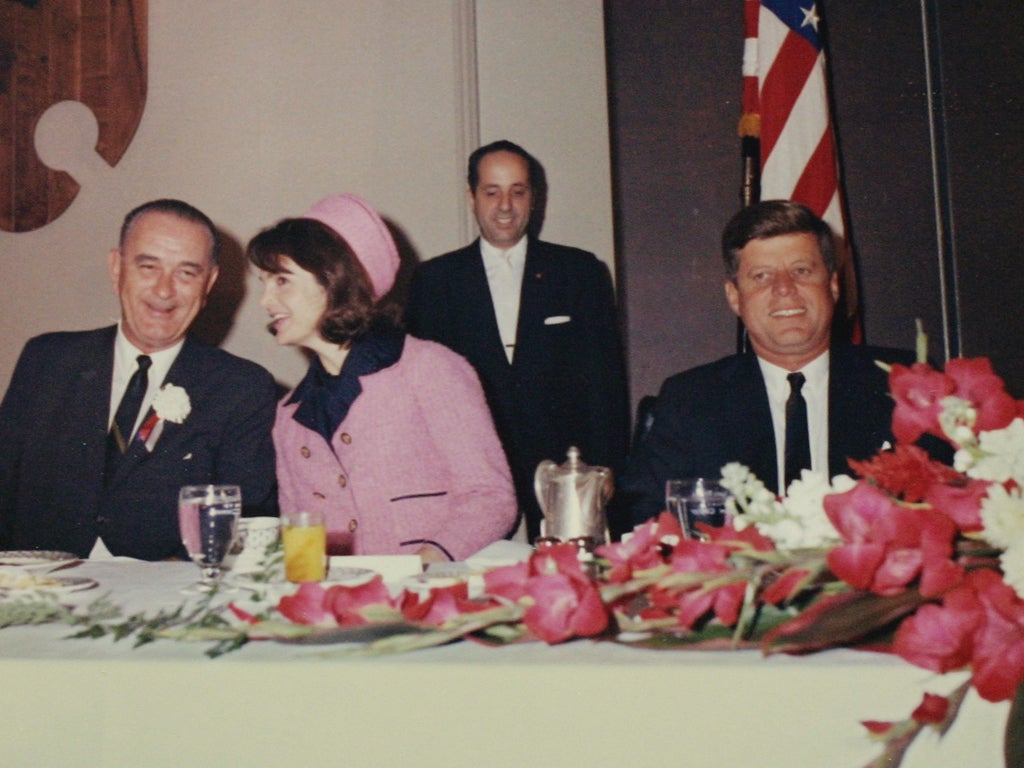Audio tape casts light on secret conversations after JFK's death
Recording reveals hidden pain of Kennedy's successor Lyndon Johnson. By Rupert Cornwell

Your support helps us to tell the story
From reproductive rights to climate change to Big Tech, The Independent is on the ground when the story is developing. Whether it's investigating the financials of Elon Musk's pro-Trump PAC or producing our latest documentary, 'The A Word', which shines a light on the American women fighting for reproductive rights, we know how important it is to parse out the facts from the messaging.
At such a critical moment in US history, we need reporters on the ground. Your donation allows us to keep sending journalists to speak to both sides of the story.
The Independent is trusted by Americans across the entire political spectrum. And unlike many other quality news outlets, we choose not to lock Americans out of our reporting and analysis with paywalls. We believe quality journalism should be available to everyone, paid for by those who can afford it.
Your support makes all the difference.The release of an audio tape lost for almost five decades has provided new details of one of the grimmest flights in history: the one carrying a murdered president, his wife and his successor from Dallas to Washington on 22 November 1963.
Until now, it was assumed the only surviving recording of conversations aboard Air Force One as it flew back with John F Kennedy's body was an edited version prepared by the Johnson administration and handed over to the LBJ Presidential library, which in turn made it public in the 1970s. But now the complete tape, which runs for 142 minutes and contains 42 minutes of new material, can be heard. It was made for JFK's top military aide, General Chester "Ted" Clifton Jr, who was aboard Air Force One that day, and who kept the tape at his home. He died in 1991. After his wife died in 2009, his estate sold the tapes to the Raab Collection, historical document dealers in Philadelphia. Raab put one copy of the tape on the market for $500,000 and gave another to the US National Archives, which this week made them available to the public.
The new material does not rewrite history. But it adds new details and some wrenching personal exchanges – as well as one tantalising piece of ammunition for conspiracy theorists who have never accepted that an act of such consequence could have been conceived and carried out by a lone gunman.
Lyndon Johnson had been sworn in as president only minutes before Air Force One took off from Love Field in Dallas, less than two hours after JFK had been pronounced dead. In flight, he calls the mother of the slain president to express his condolences.
"I wish to God there was something that I could do," Mr Johnson says.
Rose Kennedy thanks him, then quickly ends the conversation – a sign perhaps that relations between her son and his vice-president were in fact often far from easy.
The murder of Kennedy posed logistical problems, unimaginable only hours before. What vehicles would collect the body at Washington's Andrews Air Force Base? Where would it be taken, and would Jackie Kennedy, her pink suit still stained with her husband's blood, accompany it?
At one point, Gerald Behn, head of the Secret Service, can be heard discussing arrangements, suggesting a "black Cadillac", and maybe ambulances. "I would get them out there anyways, regardless," he tells an assistant.
Most sinister – for conspiracy buffs at least – is an aide's urgent request to get in touch with his boss, General Curtis LeMay, then Chief of Staff of the US Air Force, a Cold War hawk and advocate of pre-emptive nuclear strikes against the Soviet Union.
General LeMay, who was the role model for the manic General Buck Turgidson in Stanley Kubrick's Dr Strangelove, was a constant critic of JFK, whom he regarded as an appeaser. No less salient for conspiracy theorists, his whereabouts on 22 November 1963 has never been known – until now. On the tapes, an aide of General LeMay tries to reach his boss. "Colonel Dorman, General LeMay's aide," he identifies himself. "General LeMay is in a C140. Last three numbers are 497, SAM C140. His code name is Grandson. And I want to talk to him." Why was that demand made, and why was it edited out of the LBJ Library version? To protect code names and other sensitive national security information is a reasonable explanation.
But some Americans – three-quarters of whom believe the government covered up the truth about the shooting, according to a 2009 poll – may not be so easily convinced.
Join our commenting forum
Join thought-provoking conversations, follow other Independent readers and see their replies
Comments